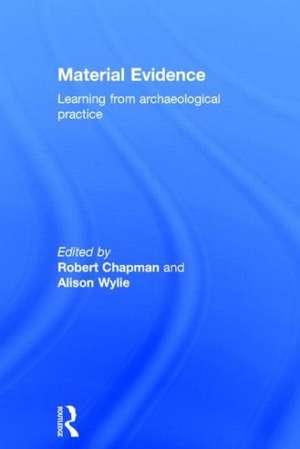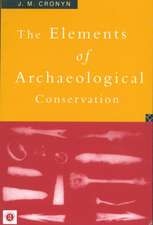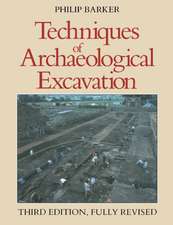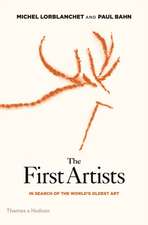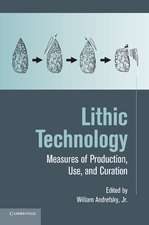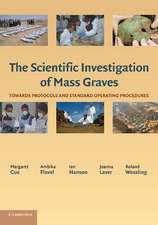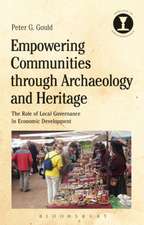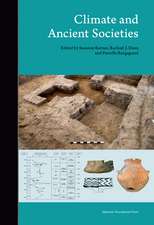Material Evidence: Learning from Archaeological Practice
Editat de Robert Chapman, Alison Wylieen Limba Engleză Hardback – 17 dec 2014
Material Evidence takes a resolutely case-based approach to this question, exploring instances of exemplary practice, key challenges, instructive failures, and innovative developments in the use of archaeological data as evidence. The goal is to bring to the surface the wisdom of practice, teasing out norms of archaeological reasoning from evidence.
Archaeologists make compelling use of an enormously diverse range of material evidence, from garbage dumps to monuments, from finely crafted artifacts rich with cultural significance to the detritus of everyday life and the inadvertent transformation of landscapes over the long term. Each contributor to Material Evidence identifies a particular type of evidence with which they grapple and considers, with reference to concrete examples, how archaeologists construct evidential claims, critically assess them, and bring them to bear on pivotal questions about the cultural past.
Historians, cultural anthropologists, philosophers, and science studies scholars are increasingly interested in working with material things as objects of inquiry and as evidence – and they acknowledge on all sides just how challenging this is. One of the central messages of the book is that close analysis of archaeological best practice can yield constructive guidelines for practice that have much to offer archaeologists and those in related fields.
| Toate formatele și edițiile | Preț | Express |
|---|---|---|
| Paperback (1) | 461.60 lei 6-8 săpt. | |
| Taylor & Francis – 12 dec 2014 | 461.60 lei 6-8 săpt. | |
| Hardback (1) | 1118.19 lei 6-8 săpt. | |
| Taylor & Francis – 17 dec 2014 | 1118.19 lei 6-8 săpt. |
Preț: 1118.19 lei
Preț vechi: 1363.65 lei
-18% Nou
Puncte Express: 1677
Preț estimativ în valută:
213.99€ • 232.36$ • 179.75£
213.99€ • 232.36$ • 179.75£
Carte tipărită la comandă
Livrare economică 23 aprilie-07 mai
Preluare comenzi: 021 569.72.76
Specificații
ISBN-13: 9780415837453
ISBN-10: 0415837456
Pagini: 400
Dimensiuni: 156 x 234 x 22 mm
Greutate: 0.71 kg
Ediția:1
Editura: Taylor & Francis
Colecția Routledge
Locul publicării:Oxford, United Kingdom
ISBN-10: 0415837456
Pagini: 400
Dimensiuni: 156 x 234 x 22 mm
Greutate: 0.71 kg
Ediția:1
Editura: Taylor & Francis
Colecția Routledge
Locul publicării:Oxford, United Kingdom
Cuprins
Section 1. Conventions of field practice 1. Repeating the unrepeatable experiment 2. Experimental Archaeology at the crossroads: A contribution to interpretation or evidence of ‘xeroxing’? 3. Working Archives: Mucking, Great Wilbraham and the chimera of ‘Total Archaeology’ 4. Excavation as debate Section 2. Recording conventions: Typological and stratigraphic units 5. ‘Proportional representation’: Multiple voices in archaeological interpretation at Çatalhöyük 6. The tyranny of typologies: Nationality and evidential reasoning in Romano-Egyptian archaeology7. High-resolution ecological and social histories at Çatalhöyük: Eliciting evidence from microstratigraphy 8. Integrating database design and use into recording methodologies Section 3. Cross-field trade: Archaeological applications of external expertise and technologies 9. The Archaeological Bazaar: Anybody want to buy some science? 10. ‘The economics of archaeological science: Innovation, ring fences, calibration’ 11. The world around: Studying the emergence of structure in past landscapes 12. Crafting knowledge with (digital) visual media in archaeology Section 4. Multiple working hypotheses, strategies of elimination, and triangulation 13. Lessons from modeling Neolithic farming practice: methods of elimination 14. Uncertain on principle: Combining lines of archaeological evidence to create chronologies 15. A ‘mixed mass of facts’ 16. Archaeology and law: An initial exploration Section 5. Broader perspectives: Material culture as object and evidence 17. Meeting pasts halfway: A consideration of the ontology of archaeological material evidence 18. Matter and facts: Material culture in the history of science
Descriere
Material Evidence takes a resolutely case-based approach, exploring key instances of exemplary practice, critical turning points, and innovative developments in the use of archaeological data as evidence. In doing so, it identifies norms of evidential reasoning that underpin judgments of epistemic credibility in archaeology.
